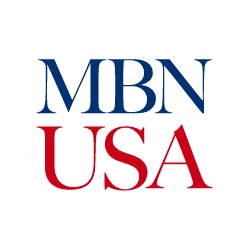WRMSDC serves Northern California (including Silicon Valley), Nevada and Hawaii
By Zachary
Rinkins
- Founded in 1977, WRMSDC serves Northern California (including Silicon Valley), Nevada and Hawaii.
- WRMSDC small businesses generate more than $21.7 billion in annual sales and contribute $700 million in tax revenue.
- Larger companies in the WRMSDC ecosystem give back by mentoring and investing in other firms.
As
companies nationwide reassess their business priorities, the Western Regional
Supplier Development Council (WRMSDC) is making a compelling case for why
enterprise partnerships and supplier networks are good for business — and for
the broader economy.
“We are at
such a turning point now where we need to actually reframe the narrative and
how we move forward in helping small businesses to continue to grow and
thrive,” said Donna Ruff, WRMSDC’s president and CEO.
Founded in
1977, WRMSDC serves Northern California, Nevada and Hawaii. The Council
supports fast-growing, independently owned companies by connecting them with
training, strategic relationships, and contract opportunities. The Council’s
economic footprint is significant: It generates more than $21.7 billion in
annual revenue, supports 800,000 jobs and contributes $700 million in tax
revenue from businesses within its network.
“Things are
not easy for small businesses in general … with some of the disruption and
changes in legislation,” Ruff said.
Based in
Oakland, California, WRMSDC’s service area encompasses Silicon Valley, where
tech dominates, as well as major industries such as health care, hospitality,
construction and entertainment across Nevada and Hawaii. The Council supports a
wide range of business owners, but Ruff said the most underused strategy for
growth is how businesses support one another.
“The focus
for our Council is how do we help these small businesses do better business
with one another,” she said. “Since every business naturally operates within
capacity constraints, fostering these peer-to-peer relationships becomes even
more valuable for building a thriving small business ecosystem that benefits
everyone.”
To help
companies maximize the benefits of WRMSDC membership, Ruff offered this
valuable advice.
“Nurture
your network. Be present and participate, virtually or in person,” she said.
“And ask for help. If the worst someone can say is ‘no,’ ask anyway.”
Ruff
emphasized the virtue of preparation, further charging members to “Prepare. Set
yourself up for success by leveraging the tools available to you.”
Why
corporations still see the value
She offers a pragmatic, business-first approach for companies navigating legal or reputational risks associated with public-facing partnerships.
“We
understand the nature of what is happening,” Ruff said. “So collectively, we
work with the corporations that support the organization to understand their
pain points and how we create best business practices for them to use going
forward.”
WRMSDC’s
value proposition for corporations is centered around three core strengths:
innovation, supply chain advantage and relationship building.
“These
small-business contracts were earned because they were capable businesses — not
because of a handout,” Ruff said. “It’s all about supporting small and capable
businesses going forward.”
She
challenges companies to develop strong relationships with growing business
suppliers.
“Participation
and the power of intentional connection in these uncertain times is going to be
an anchor,” Ruff said. “The Council offers that opportunity to provide proven
and profitable best business practices for the corporations and the network.”
How WRMSDC
built a $21.7 billion impact
While
WRMSDC is headquartered in one of the nation’s most powerful economic regions,
Ruff attributes the Council’s success to intentionality and collaboration, not
set-asides.
“It is also
about the connections that we’re making with these corporations who are vested
and interested in growing small businesses,” she said. “We create working
groups and committees to discuss what’s valuable to the corporation and the
businesses, and then we build our programs accordingly.”
Larger
companies in the WRMSDC ecosystem also give back by mentoring and investing in
other firms.
“It is
cultivating a stronger and sustainable community,” Ruff said. “As a result, it
is creating jobs … and is allowing us to generate billions of dollars in
impact.”
What’s next? Innovation, training and storytelling
Looking
ahead, Ruff said WRMSDC is deepening its commitment to innovation and
community-led growth. That includes giving smaller business owners more input
and creating training pipelines for the next generation of entrepreneurs.
“It is also
going to be about economic development and how we train and work with our local
communities and cities on job training to grow these businesses and create new
opportunities,” she said.
WRMSDC is
also exploring new platforms to help companies connect more easily, present
themselves more effectively, and tap into regional and global opportunities.
“Our
business-to-business network is second-to-none. It is almost like a referral
system that helps firms find one another,” Ruff said. “We also encourage them
to understand how to work smarter by leveraging technology.”
She said
collaboration among organizations will also be key.
“How do we
come together and create a better ROI [return on investment] through circular
economy practices that not only secure a future with those corporations for
long-term support, but also build sustainable value chains where our outputs
become inputs for one another?” Ruff said.
Most
importantly, she said, small businesses must do a better job of telling their
stories.
“We need to
tell more of the stories that demonstrate how we’re building a sustainable
business ecosystem,” Ruff said. “We have to do a better job of sharing our
success stories of small firms partnering with corporations—showing how these
relationships create regenerative cycles where economic growth, community
development and environmental stewardship reinforce each other. When we
celebrate these partnerships that help companies scale sustainably, we’re not
just highlighting individual success; we’re modeling how our entire ecosystem
can thrive long term through interconnected relationships that benefit all
stakeholders.”
To learn
more about WRMSDC or to get involved, visit wrmsdc.org.





